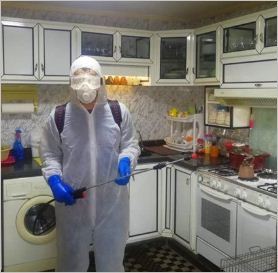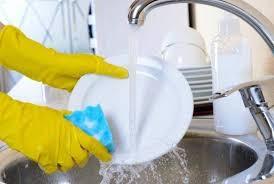Text
How to sterilize bottles and jars for canning
Pick suitable bottles and jars.
Look for bottles and jars designed for packaging. It should be free from holes and crevices.
The jars should be flat, and the covers are spiral hollow. You can reuse spiral covers, but you will need flat covers.
Bottles should contain seals and be in good condition.
Wash bottles and jars.
Use hot water and soap to thoroughly wash the bottles and jars if you want to sterilize them. Make sure that they are completely free of dried pieces and leftovers. Also wash the covers. It should be very clean.
Place the tools in a deep bowl.
Put the bottles and jars straight into the bowl. Place the caps around the bottles and jars. Fill the container with water to cover about 2.5 cm bottles and jars.
Boil bottles and jars.
Bring the boiling water completely to a boil. If the water height is less than 304.8 m, boil it for ten minutes. Add an extra minute for every 304.8 height.
Use pliers to pick up tools from the water.
One by one, then lift the bottles and jars and place them on a paper towel to dry them. Be careful not to touch the bottles and sterile jars except for the clean paper towel.
Filling and closing bottles and jars
Fill the bottles and jars with the food you want to preserve. Do this when the food and jars are warm. Adding hot food to a cold container will break it.
Leave about (0.6 cm) of free space at the top of each bottle or jar.
Wipe the edges of the bottles and jars to ensure that the food drops will not affect the location of the cap.
Place lids on bottles and jars.
Make sure the covers are closed and securely fastened.
Place the jars on a peg inside a deep bowl.
This hanger will help the jars not touch the bottom of the bowl, helping the contents of the jars to cook evenly and ensuring the lids are closed properly. Use a lever to place the jars on the shelf. تنظيف البرطمانات
Boil the jars.
Fill the container to cover the jars with water (5.1 cm). Boil the jars about ten minutes, then use pliers to lift them and place them on paper towels.
Wait 24 hours before handling the jars. It must be completely cold before storing it.
Check the jar caps.
The slight emptiness in the flat sheets shows that they are tightly closed. If a slight blank does not appear in the lids, open the jar and use its contents instead of storing it.
Useful ideas
Hot water is used in the dishwasher to clean food residue from the jars, but you must ensure sterilization, whether with hot water or a commercial sterilization solution, as shown in the article, and the dishwasher does not reach the necessary temperatures to kill all microbes that can make you sick.
Bottles and jars can also be sterilized with the liquid sterilizer provided in pharmacies.
0 notes
Text
How to sterilize Petri plastic dishes
Petri dishes are a common ingredient in professional and educational science labs.
There are many sterilization methods available depending on whether the Petri dishes are made of glass or plastic.
Sterilize Petri dishes
Turn on and heat the oven with the hot air sterilizer to 160 ° C.
With a soft, non-abrasive cloth, anti-bacterial dishwasher and warm water, clean and clean Petri dishes. Petri dishes should be free from debris.
Dry Petri dishes with a soft dry non-abrasive cloth. Put it aside.
Place Petri dishes in a sterile oven, and steer them. Set the timer for two hours.
After two hours, turn off the oven and allow it to cool before removing Petri glass dishes.
Remove Petri dishes from the oven in sterile laboratory tongues. Don't let your fingers or other non-sterile materials really touch the sterile Petri dishes.
Sterilizing plastic Petri dishes
Mix half a cup of chlorine (i.e. 10 percent detergent solution) with 4 1/2 cups of warm tap water. You can mix more or less sterilizing solution, remembering that it is part of the detergent for nine parts of water. Mix the mixture aside.
With a soft, non-abrasive cloth, dishwasher-safe antibacterial dish and warm water, gently clean and rinse Petri plastic dishes. It should be free of any residue, including soap.
Place Petri dishes in a sterile solution solution, one after the other, for about 2 minutes each.
In sterile lab tongue, take a Petri dish out of the solution. Allow it to dry for a few seconds and then put it in a bowl while cleaning alcohol.
Immediately remove the Petri dish from the cleaning alcohol with another pair of sterile lab marks and place it on a healthy surface to dry it in the air.
Store sterile Petri dishes in a sterile area until next use.
If you are sterilizing in your home, you can use a convection oven and biscuit sheet to sterilize Petri dishes, instead of an electric hot air oven.
Sterilization of glass Petri dishes depends on the oven temperature. It is recommended to set the oven to 160 ° C for one to two hours, or 180 ° C for 20 minutes.
Do not re-use Petri dishes if your experiment involves the use of live pathogens. The risk of mutual pollution is very high.
0 notes
Text
4 things to watch out for when cleaning cans and plastic utensils
Plastic utensils are considered practical solutions in the kitchen, whether to keep some foods in the refrigerator or to store dry materials such as legumes, etc., but their problem is changing their color with frequent use due to their impact on food colors and absorption of odors, and the difficulty of cleaning them from fats that are not easily disposed of by washing methods Regular.
Clean the plastic utensils from the fat
You can use the following methods to clean plastic utensils from the fat:
Clean plastic utensils with soap and water Use the hot water and soap mixture to soak the plastic utensils to get rid of sticking fat before resorting to other means, then rub it with a soft cloth or loofah, rinse well and dry it with water.
Clean the plastic utensils with white vinegar
Use one tablespoon of white vinegar per cup of water, as white vinegar is also a natural, safe, sterilizer for plastic utensils. Soak the pots for an hour, then rub them in a soft pulp, rinse them well and dry them with water.
Clean the plastic utensils from yellowing
Plastic utensils are affected by the colors of food dyes after a period of use, such as curry, tomato sauce, coffee, etc., so we notice the color change of plastic and the difficulty of removing and cleaning it, and to restore the color of the utensils again use these methods:
Clean plastic utensils with baking soda
Mix a bunch of soda bicarbonate with water to have a soft dough, and use it with a soft loofah to exfoliate the light spots.
Clean the plastic utensils with a mixture of chlorine and water
Use a mixture of chlorine and water and soak the pots in it, then wash and rinse thoroughly several times. Cleaning plastic utensils with lemon juice Put a quantity of lemon juice in plastic utensils and leave for an hour then rinse well, to get rid of dyes and bad smells. Exposure to the sun: Pay attention to each period by placing the plastic utensils in a place exposed to the sun for several hours. The sun has a whitening effect to get rid of pigmentation.
0 notes
Text
plastic Bottle cleaning and sterilization
Bottle cleaning and sterilization
It is important to sterilize all the equipment used to feed the child, and this includes the bottle and the nipple, and this is done until the child is at least twelve months old. In fact, children during their first year are at risk of contracting diseases, and failure to sterilize the feeding leads to the accumulation of bacteria and viruses, Thus, sterilization and cleaning protects the child from infection, diarrhea and vomiting, and it is not possible to create an environment completely free of germs for the child شركة تعقيم بالرياض
How to clean plastic bottles
Bottles and equipment used in feeding the child should be cleaned immediately after each use in order to prevent the accumulation of germs in them and thus contamination of the milk provided to the child, and the following steps can be taken to ensure the cleanliness of breastfeeding
Hand-washing: Hand-washing with soap and water for twenty seconds.
Separation of parts: all feeding parts are separated.
Parts rinsing: the parts are rinsed by placing them under the running water tap, and caution should not be placed in the bowl, and it is not required that the water be cold or warm.
Put them in the bowl: put all parts of the feeding in a clean container, and this bowl is only intended for cleaning the feeding parts, then after that hot and soapy water is added, then the parts of the feeding are rubbed in a dedicated brush for feeding, and during rubbing the parts make sure that the water comes out of Nipple opening for feeding to ensure cleanliness.
Drying parts: Place the bottle, parts and brush on a piece of fabric that is clean and unused. How to sterilize plastic bottles In fact, sterilization of breastfeeding and its parts is for the purpose of killing germs that may stick to the feeding parts and other food preparation equipment for the child
There are several methods for sterilizing breastfeeding and its parts, including:
Boiling sterilization is done by raising the water temperature enough to kill the germs or bacteria that remain after cleaning
Plastic bottles are sterilized by doing the following:
Feeding, nipple, lid, and utensils are placed in a bowl on the stove from the back. Add enough water to cover all equipment. Boil water for five minutes. Then the stove is turned off and the water is left to cool. Hands are washed before handling lactation and sterile parts. If there is no immediate use of breastfeeding, it is placed in the refrigerator, and if it is not used during a whole day, it is to be sterilized again.
Chemical sterilization
Plastic bottles are sterilized with chemicals by means of disinfectant solutions or tablets, which are placed in the container to be placed in the bottle and its parts, as follows:
All parts are placed inside the bowl with enough water to cover all equipment.
The manufacturer's instructions are followed, and the bottle is usually left for thirty minutes, or as determined by the company.
Never wash the solution after disinfecting it, as this will expose the parts to the germs again.
Steam sterilization
The sterilization of plastic bottles using steam is through the microwave or by electrical sterilization, and there are many devices and manufacturers available to sterilize the bottles and the feeding and its parts are placed inside the microwave for 90 seconds, and the feeding should be left open so that the pressure does not form inside it, which is produced from water vapor As for electric sterilization, it takes 8 to 12 minutes.
0 notes


